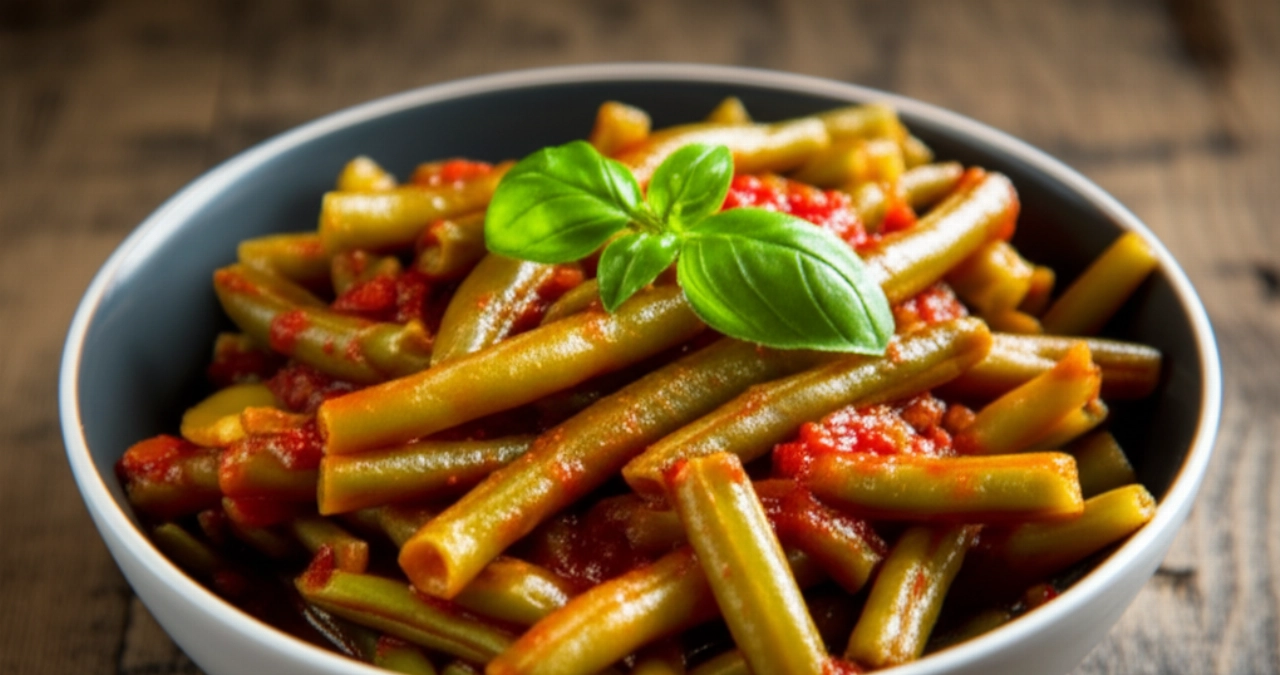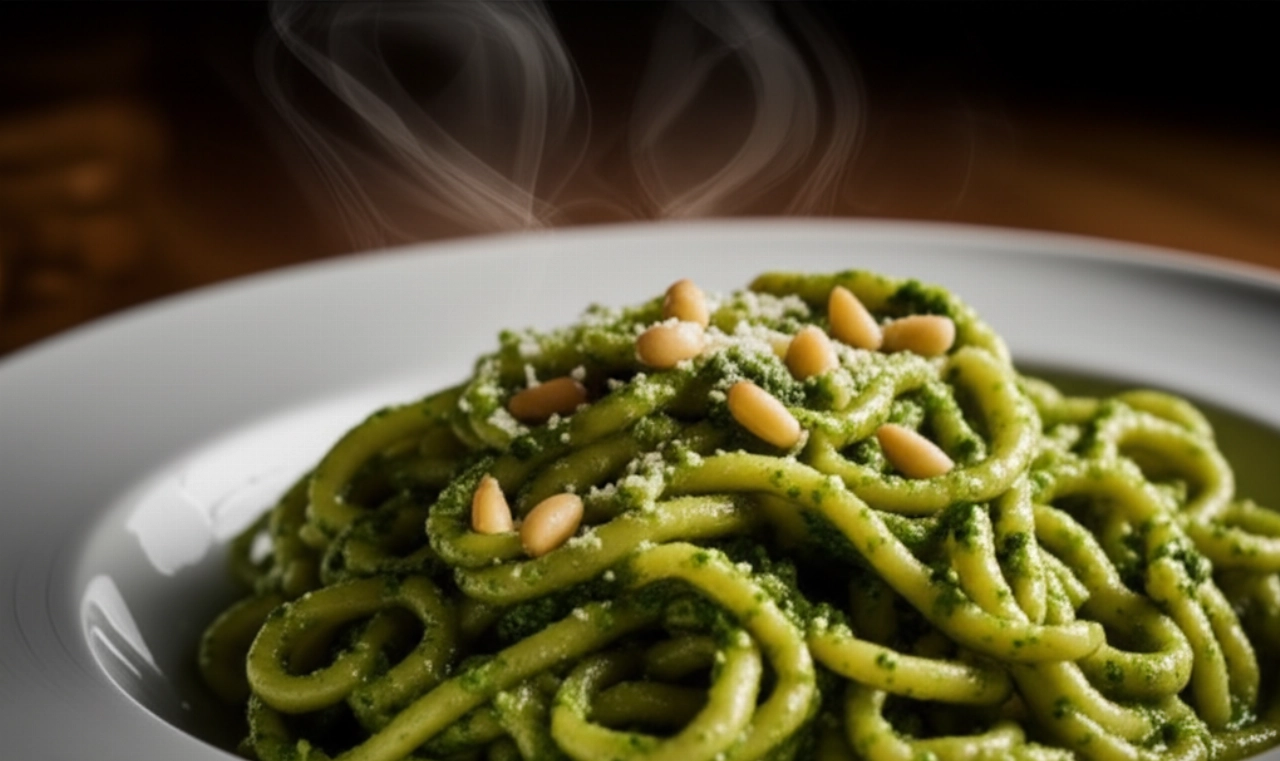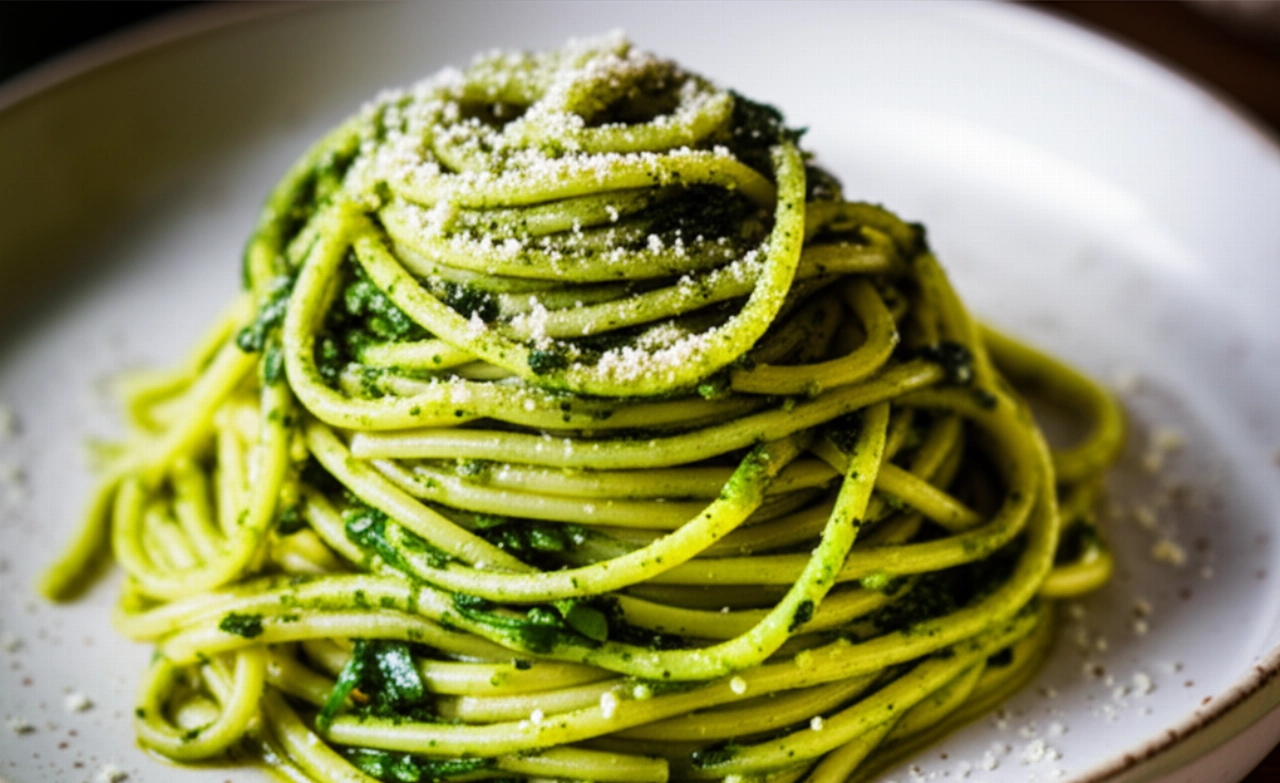Do you dream of bringing to the table a Pesto alla Genovese so bright green and fragrant that it transports you directly to the alleys of Genoa, smelling the freshly pounded basil?
But how many times have you tried to make it at home and it turned out dark, bitter, or too liquid? Finding the true recipe, one that respects tradition and guarantees an impeccable result, seems almost impossible.
Make yourself comfortable. Here on Search Recipes, you won't just find a list of ingredients, but the definitive guide, full of tricks and tips, to prepare the most authentic and delicious Pesto alla Genovese of your life. Success, and that bright green that everyone will admire, are guaranteed. I'll guide you step by step to obtain a pesto with a vibrant color, an intoxicating aroma, and a velvety consistency, just like the Ligurian tradition, without it oxidizing or becoming bitter.
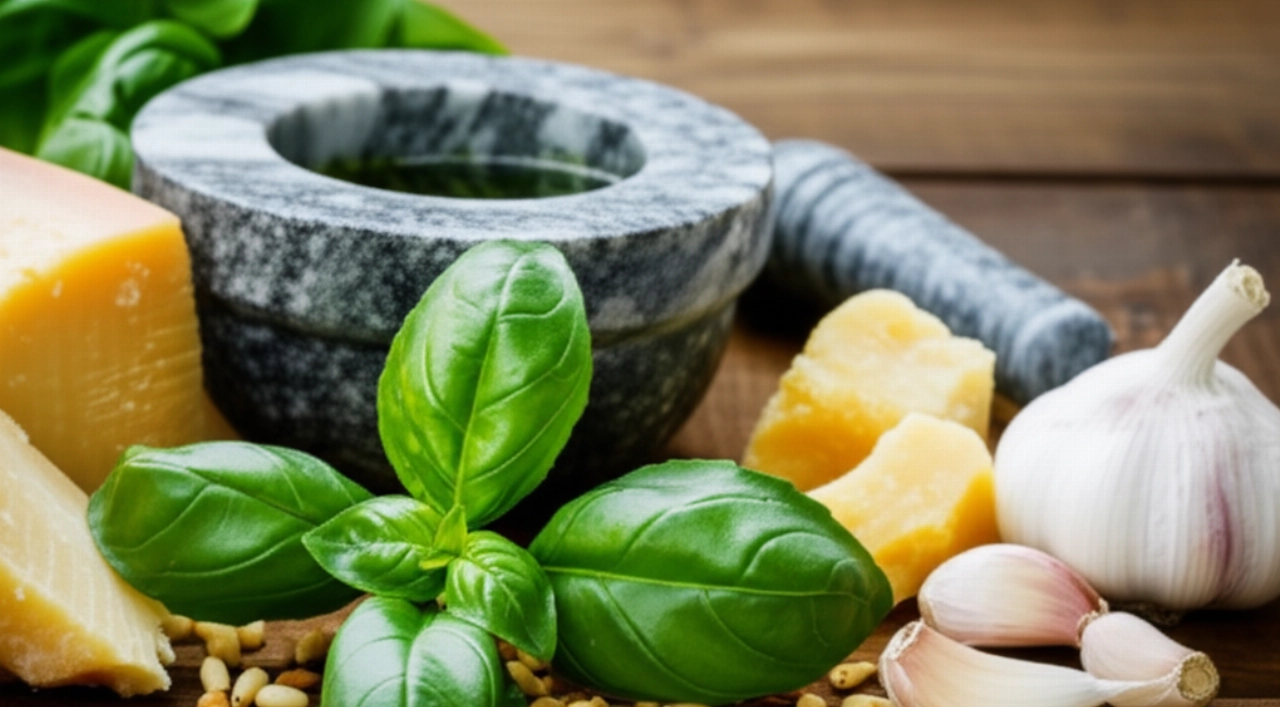
Ingredients for an Authentic Pesto alla Genovese: The Choice That Makes the Difference
The secret to an extraordinary pesto begins with the quality of the ingredients. It's not just a list, but a conscious selection that makes all the difference.
- Genovese Basil PDO: It's the soul of pesto. Choose small, tender, and very fragrant leaves. Avoid those that are too large or have dark spots. Do not wash them under running water, but gently clean them with a damp cloth if necessary, to avoid damaging their essential oils.
- Pine Nuts: They must be fresh and of good quality, preferably Italian. Do not toast them! Their delicate flavor is fundamental for the balance of the pesto.
- Garlic: Just one small clove, preferably with the central germ removed (the green sprout), for a sweeter and less invasive flavor. If you don't like garlic, you can omit it, but know that a touch is part of the tradition.
- Parmigiano Reggiano PDO and Pecorino Sardo PDO: A balanced mix is ideal. Parmigiano (aged at least 24 months) gives sweetness and savoriness, Pecorino (aged) adds a more decisive and aromatic touch. The classic proportion is 2/3 Parmigiano and 1/3 Pecorino.
- Extra Virgin Olive Oil: Essential! Choose a delicate, light fruity oil, possibly Ligurian. An oil that is too intense or bitter would ruin the balance of the pesto.
- Coarse Salt: A pinch, to help "pound" the ingredients and bring out the flavors.
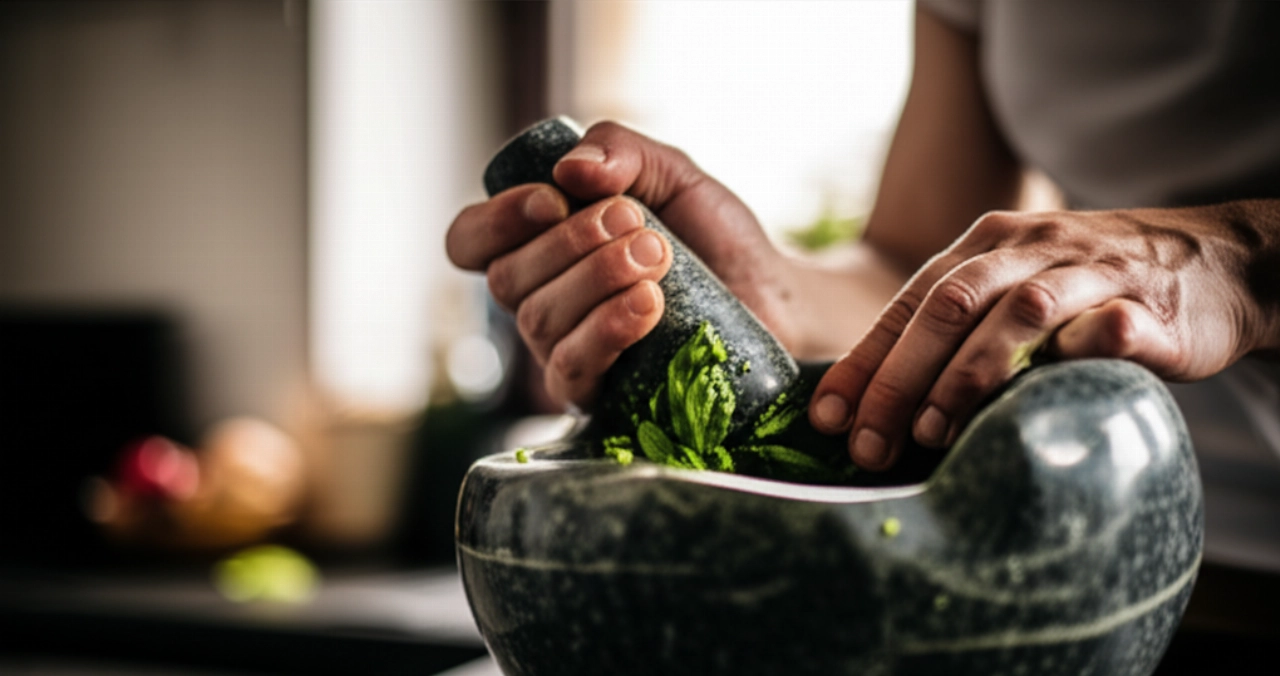
The 3 Mistakes That Ruin Pesto (and How to Avoid Them)
Preparing pesto seems simple, but there are pitfalls that can compromise the final result. I'll reveal the tricks to avoid them:
- The Enemy Heat: The most common mistake is using the blender at too high a speed and for too long. The heat generated by the blades oxidizes the basil, making it dark and bitter. Solution: Blend intermittently, for a few seconds at a time, letting the motor rest. If you have a mortar, use it! It's the traditional and best method to preserve color and aroma.
- Wet or Squeezed Basil: Water is the enemy of pesto. If the leaves are wet, the pesto will be watery and will oxidize more easily. Solution: Gently clean the leaves with a damp cloth, without washing them under running water. Never squeeze them.
- Too Much Garlic or Wrong Oil: Too strong garlic or too bitter extra virgin olive oil can overpower the delicate flavor of the basil. Solution: Use a small and delicate garlic clove (or omit it if you really don't like it) and choose an EVO oil with a light fruity flavor, not too intense.
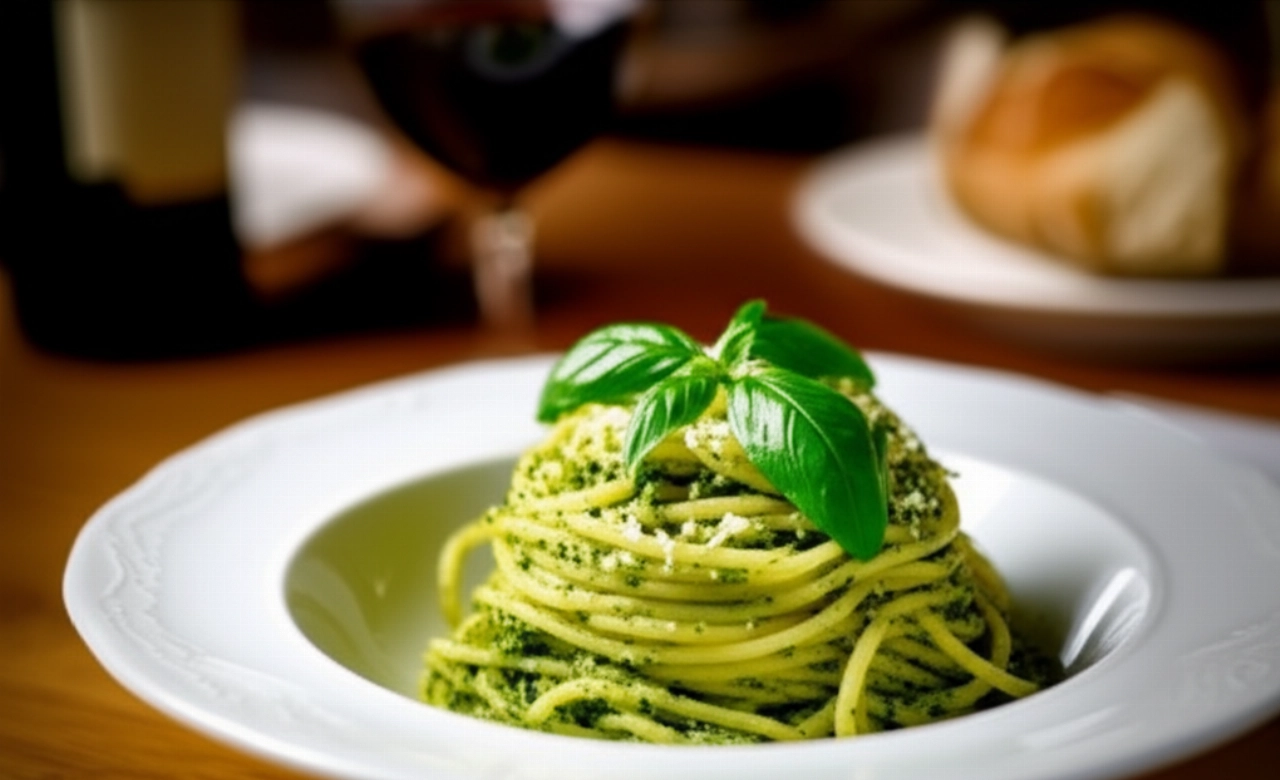
The Extra Touch: The Advice My Grandmother Passed Down to Me for a Perfect Pesto
My grandmother, the true guardian of Ligurian cuisine secrets, always told me: "Pesto wants cold and patience." And she was right!
Her foolproof trick for a bright green pesto with a perfect consistency, even when using a blender, was to add an ice cube (or a tablespoon of ice water) to the blender jar along with the ingredients, especially if the basil is very fresh and rich in water. This helps keep the temperature low during processing, preventing oxidation and preserving the basil's vibrant color. Furthermore, if you use a mortar, work calmly, with rotary movements, not crushing but "pounding" gently.
Let's Prepare Pesto alla Genovese Together: The Step-by-Step Guide
Now that you know all the secrets, let's get to work! I'll guide you step by step, whether you choose the mortar or the blender.
Traditional Method (with Mortar)
- Prepare the ingredients: Gently clean the basil leaves with a damp cloth. Peel the garlic and, if you wish, remove the germ.
- Start pounding: In the mortar, place the garlic and coarse salt. Begin to pound with rotary movements, crushing the garlic against the sides.
- Add the pine nuts: Add the pine nuts and continue pounding until you get a coarse paste.
- It's the basil's turn: Add the basil leaves, a few at a time, and pound them with gentle, rotary movements, crushing them against the sides of the mortar. Do not pound forcefully from top to bottom, but "rub" the pestle.
- Incorporate the cheeses: When the basil is almost a cream, add the grated Parmigiano and Pecorino. Continue to mix and pound gently.
- The final oil: Finally, add the extra virgin olive oil in a stream, mixing with the pestle until you obtain a homogeneous and velvety cream. Taste and, if necessary, adjust the salt.
Quick Method (with Blender)
If you don't have a mortar, you can use a blender, but with some precautions to avoid ruining the pesto.
- Prepare the ingredients: As with the mortar, clean the basil and prepare garlic, pine nuts, cheeses, and oil.
- Blend the dry ingredients: In the blender jar, put the garlic, pine nuts, and coarse salt. Blend for a few seconds until finely chopped.
- Add the basil and ice: Add the basil leaves and the ice cube (or a tablespoon of ice water). This is the secret to maintaining the color!
- Blend intermittently: Operate the blender at low speed for a few seconds at a time, turning it off and on again. Do not blend continuously! Use a spatula to push the ingredients towards the blades.
- Incorporate the cheeses and oil: When the basil is well chopped, add the grated cheeses and then the extra virgin olive oil in a stream, continuing to blend intermittently until you achieve the desired consistency.
- Check the consistency: If the pesto turns out too thick, you can add another tablespoon of oil or a teaspoon of pasta cooking water, if you're using it immediately.
How to Store Pesto alla Genovese: Tricks to Keep It Fresh and Green
You've prepared a wonderful pesto, but how do you best store it and keep its color and aroma intact?
- In the Refrigerator: Transfer the pesto to a sterilized glass jar. Level the surface and cover it with a generous layer of extra virgin olive oil. This creates a protective barrier against air and oxidation. Close the jar tightly and store it in the refrigerator for a maximum of 5-7 days.
- Freezing: The best method for long-term storage! You can freeze the pesto in single portions, using ice cube trays or small jars. Once frozen, you can transfer the cubes or portions into food storage bags. It keeps in the freezer for 3-4 months. When you need it, simply thaw the desired amount at room temperature or directly in a pan with a little pasta cooking water.
Tips and Frequently Asked Questions about Pesto alla Genovese
Here are some of the most common questions I get asked about pesto, with my answers from a "kitchen guardian":
- Can I use a blender instead of a mortar? Yes, of course! But follow my tips: blend intermittently, use low speed, and add an ice cube to prevent the basil from heating up and to preserve its color.
- How do I prevent pesto from oxidizing? The secret is to work cold (ice in the blender, mortar that doesn't generate heat) and always cover the pesto with a layer of oil when storing it.
- How long does homemade pesto last? In the refrigerator, covered with oil, it lasts about 5-7 days. Frozen, it stays perfect for 3-4 months.
- What is the best type of basil? Without a doubt, Genovese Basil PDO, with its small and very fragrant leaves. It's what gives pesto its authentic flavor.
- My pesto is too bitter, why? It could be due to too strong garlic, too intense extra virgin olive oil, or basil that oxidized due to excessive heat during processing.
There you have it! Now you no longer just have a recipe, but all the secrets to bring to the table a Pesto alla Genovese that tastes of home, tradition, and love, with that bright green color that will make you fall in love.
Don't be afraid to experiment. Cooking is an act of creativity and passion. But start from this solid base and you'll see that applause won't be lacking. Your pesto will be a true Ligurian masterpiece!
Have you tried our recipe? We're very curious to see your masterpiece! Leave a comment below, tell us how it went, or share a photo on Instagram tagging @CercaRicette.it. If you loved this pesto, you can't miss our recipe for Trofie al Pesto or for a perfect side dish like Crispy Roasted Potatoes.
